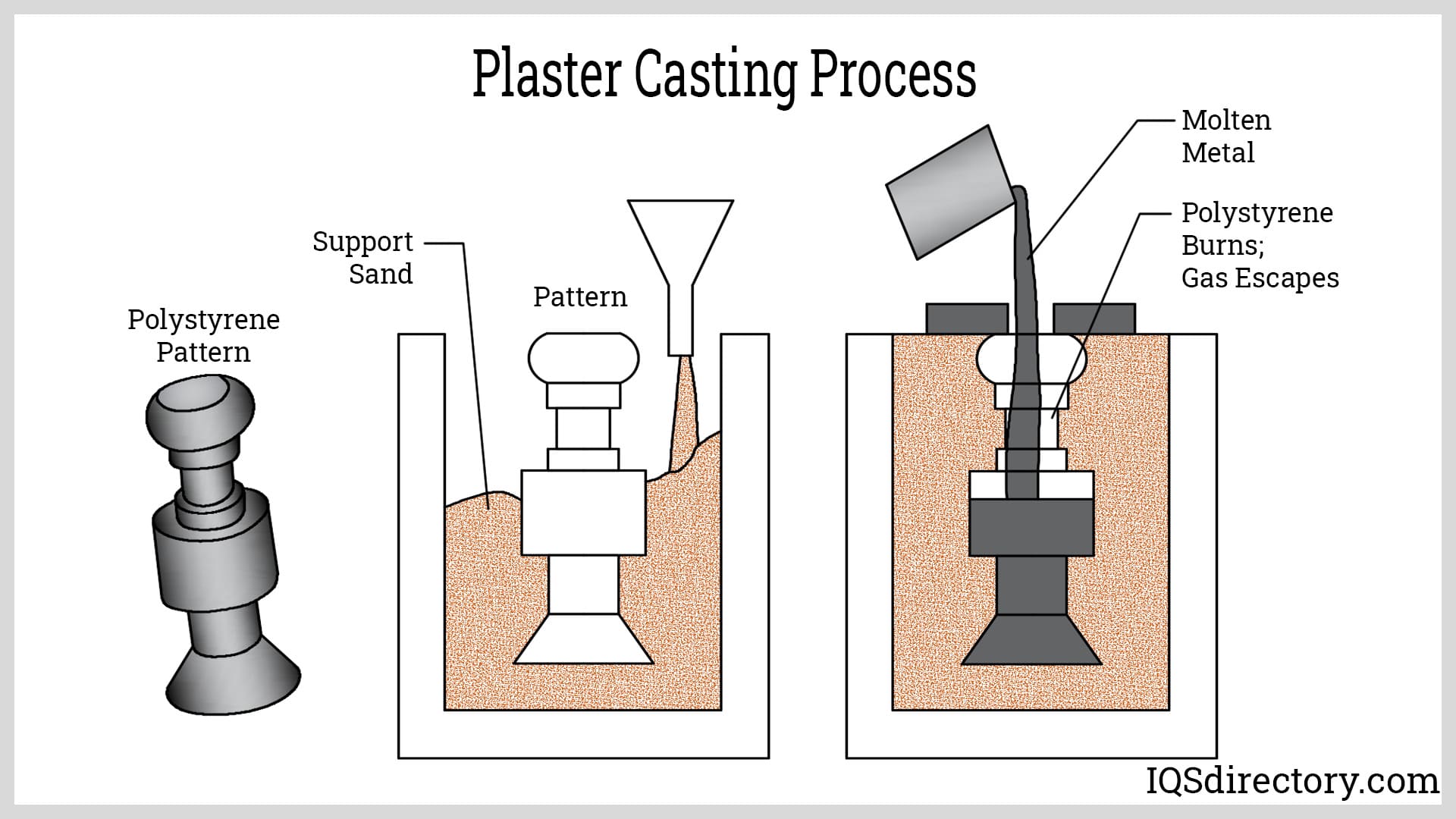The Casting Matrix Explained: How To Master Data Type Conversions
Have you ever felt a little lost when your code suddenly acts up, perhaps giving you an unexpected number or a date that just doesn't look right? It's a common experience, so it is. Often, the hidden culprit behind these puzzling moments is how our programs handle different kinds of data. Think about it: numbers, words, dates – they all have their own specific ways of being stored and used. When we try to make one type of data act like another, that's where "casting" comes into play, and understanding its ins and outs is pretty important for smooth operation, you know?
This idea of changing data types, or "casting," is more than just a simple switch; it's almost like a complex set of rules, a sort of invisible map that guides how data transforms. We can call this the "casting matrix." It's not a physical thing, of course, but rather a way to think about the various pathways and considerations involved when you ask your computer to treat a piece of information differently from its original form. This can happen in many places, from the basic math you do to how your database talks to your application, and even how pointers work in system-level programming.
Getting a good grasp on this "casting matrix" can truly save you from a lot of head-scratching and unexpected errors. It helps you anticipate how your data will behave, whether you're trying to convert a number into text, or perhaps a string of characters into a proper date. Knowing these rules, which vary a bit depending on the programming language or system you're using, is a key part of writing reliable and efficient programs. So, let's take a closer look at what this conceptual matrix involves and how you can use it to your advantage, actually.
- Having Fun Life Quotes
- Twista Fastest Rap Song
- White Party Food Ideas
- Is Bull Sperm In Red Bull
- Brothers Keeper Tv Show
Table of Contents
- Understanding the Casting Matrix: What It Means for You
- The Basics: Explicit vs. Implicit Casting
- Casting in Different Programming Paradigms
- Database Casting: Navigating Data Formats
- Mastering Your Casting Matrix: Best Practices
- Frequently Asked Questions About Casting
- Making Sense of the Casting Matrix
Understanding the Casting Matrix: What It Means for You
When we talk about a "casting matrix," we're really thinking about a comprehensive framework for how data types interact and change. It's about recognizing that every time you perform a type conversion, there are specific rules, potential outcomes, and sometimes even hidden dangers involved. This isn't just for advanced programmers; anyone who works with data, from spreadsheets to complex applications, will encounter these situations. The goal is to make these conversions predictable and safe, rather than a source of unexpected trouble, you know?
For someone building software or managing databases, the "casting matrix" helps you consider all the angles. It prompts you to ask questions like: "What happens if I try to turn this piece of text into a number?" or "Will this conversion lose any important information?" It’s a way of being deliberate about your data transformations, ensuring that the data keeps its integrity and meaning throughout its journey in your system. This approach can seriously cut down on errors and make your programs more robust, too it's almost.
So, instead of just trying a "cast" and hoping for the best, thinking in terms of a "casting matrix" encourages a more thoughtful and informed approach. It’s about understanding the underlying mechanisms and potential side effects, which is pretty important for building reliable systems. This includes knowing when to use explicit conversion methods versus relying on automatic ones, and being aware of the specific rules that apply in different programming languages or database environments. It’s a bit like having a map for tricky terrain, to be honest.
- Blippi News
- Mary Matalin Images
- 90 Day Fianc%C3%A9 The Other Way Cast
- Half Up And Half Down Sew In
- Pitbull Younger
The Basics: Explicit vs. Implicit Casting
At the heart of any "casting matrix" are two main ways data types change: explicitly, where you tell the system exactly what to do, and implicitly, where the system makes a conversion for you without being asked directly. Both have their place, but understanding when and how they occur is vital. You see, an explicit cast is like giving a direct order, making your intentions perfectly clear. An implicit conversion, on the other hand, is the system guessing what you want, which can sometimes lead to surprises, apparently.
Convert Versus Cast: A Clearer Path
Sometimes, the words we use in programming can get a little confusing, and "cast" is one of those words. As it happens, some systems offer a function called `CONVERT` which can be a clearer choice than `CAST`. For example, in a database system, if you write `CAST('20130302' AS DATE)`, it might work, but using something like `CONVERT('20130302', DATE_STYLE)` could be more explicit about how that string should become a date, avoiding any guesswork.
The idea here is to reduce ambiguity. When you use a `CONVERT` function with an optional `style` parameter, you're giving the system more context, which helps it avoid confusion. This is particularly useful when dealing with data that could be interpreted in multiple ways, like date strings that might mean different things in different regions. Being precise here helps ensure your data transforms exactly as you expect, which is really what you want.
Automatic Conversions: When Data Changes on Its Own
Implicit conversions are a bit like silent helpers that can sometimes cause trouble. For instance, if you're doing a division operation, and one of your numbers is a whole number (an integer) while the other is a decimal number (a double), the system will often automatically change the integer to a double. This means the result of your division will also be a decimal, which is usually what you want for accuracy.
However, this automatic behavior isn't always benign. If you're expecting a whole number result and one of your operands silently turns into a decimal, it could lead to subtle bugs that are hard to track down. It’s a bit like someone tidying up your desk but moving things to places you don't expect. So, knowing when these implicit conversions happen is a key part of mastering your "casting matrix," you know, to prevent those little surprises.
Casting in Different Programming Paradigms
The rules and methods for casting aren't uniform across all programming languages or systems; they vary quite a bit. What works seamlessly in one language might cause an error or unexpected behavior in another. This is why a "casting matrix" needs to account for these differences, almost like having different sections for different rulebooks. Let's look at how casting shows up in various programming environments, actually.
Pointer Casting and the Rules That Govern It
In languages like C or C++, where you work directly with memory addresses using "pointers," casting pointers is a powerful but potentially risky operation. There are very specific rules about how you can cast pointers, and these are often detailed in language standards. For instance, the C 2011 standard, in clause 6.3.2.3, lays out many of these rules. Among other things, it explains how pointers to objects might be cast to other pointers, but with strict conditions.
Ignoring these rules can lead to serious issues, like accessing memory you shouldn't, which can crash your program or create security vulnerabilities. It’s a bit like trying to fit a square peg in a round hole; sometimes it just won't work, or it will break something. So, when dealing with pointers, understanding the precise rules of your "casting matrix" for that language is absolutely essential, you know?
Static and Dynamic Casts in Action
C++ offers more specialized casting operators like `static_cast` and `dynamic_cast`, which provide more control and safety than the older C-style cast. `static_cast` is used for conversions that the compiler can check at compile time, like turning a `void*` (a generic pointer) into a specific type of pointer, say, to an integer. It's a bit like saying, "I'm pretty sure this generic thing is actually this specific thing."
`dynamic_cast`, on the other hand, is used for converting pointers and references in class hierarchies, typically when you're dealing with polymorphism. This cast happens at runtime, meaning the program checks if the conversion is valid while it's running. If it's not valid, `dynamic_cast` will usually return a null pointer or throw an exception, giving you a chance to handle the error gracefully. It’s a very useful tool for making sure your type conversions are safe in more complex object-oriented designs, actually.
Java and the World of Type Conversion
Java, being a statically typed language, relies heavily on type conversion, or "casting," as a very common practice. Because variables have a fixed type, you often need to tell Java explicitly when you want to treat an object of one type as another, especially when dealing with inheritance. This means you'll see a lot of casting operations in Java code, so it is.
For example, if you have a general `Object` type and you know it's actually a `String`, you'd cast it to `String` before using string-specific methods. This explicit casting helps the Java compiler ensure that you're only trying to perform operations that are valid for the actual type of the object. It's a core part of Java's type safety system, which helps prevent many common programming errors, too it's almost.
Primitive Versus Reference Types: A Subtle Difference
In Java, there's a really important distinction between primitive values (like `int`, `long`, `boolean`) and reference types (like `Integer`, `Long`, `Boolean`, or any object). This difference affects how casting works. For instance, there's a difference between a cast to `long` (the primitive value) and a cast to `Long` (the reference type, which is an object).
If you cast a value to `long` (the primitive), it's a direct conversion of the raw data. If you then need it as a `Long` (the object), Java will automatically "box" it, meaning it wraps the primitive value inside a `Long` object. This "autoboxing" and "unboxing" can sometimes be a bit confusing if you're not aware of it, but it’s a convenient feature that bridges the gap between primitive and object types. Understanding this distinction is a key part of the Java section of your "casting matrix," you know.
Database Casting: Navigating Data Formats
The "casting matrix" isn't just about programming languages; it extends to how you handle data in databases, which is pretty common. Databases store data in specific formats, and sometimes the way data is stored isn't quite the way you need to use it in your application. This often requires casting operations right within your database queries, or when you pull data into your program, actually.
Working with Dates and Strings in Databases
A very frequent scenario involves dates. It's not unusual for date information to be stored as a string of characters in a database, perhaps because of legacy systems or flexible data entry. For example, in a DB2 database, you might find dates like '2023-10-26' stored as plain text. To use this data effectively for calculations or sorting, you need to convert it into a proper date type.
Trying to cast this string directly to a date can sometimes be tricky. If the string isn't in the exact format the database expects for a date, the cast might fail, leading to an unhandled exception or an "undefined" result that's indistinguishable from other problems. This is where understanding the specific date formats your database expects, and perhaps using `CONVERT` with a style parameter, becomes really important, you know.
Common Pitfalls and How to Avoid Them
One of the biggest pitfalls in database casting is assuming the data format. If your application expects 'MM/DD/YYYY' but the database string is 'YYYY-MM-DD', a direct cast will likely fail. Another issue is data loss; if you cast a very precise decimal number to an integer, you'll lose all the decimal places. This kind of data loss can lead to incorrect calculations or reports, which is pretty serious.
To avoid these problems, it’s always a good idea to validate your data before casting. Check if the string actually looks like a date before attempting to convert it. Also, be mindful of precision when converting between numeric types. Sometimes, it’s better to use explicit conversion functions that allow you to specify how to handle rounding or truncation, giving you more control over the outcome. This proactive approach is a cornerstone of a solid "casting matrix" strategy, actually.
Mastering Your Casting Matrix: Best Practices
To truly master the "casting matrix" and avoid common headaches, a few practices can make a big difference. First, always prefer explicit conversions over implicit ones when possible. Explicitly stating your intention makes your code clearer and reduces the chance of unexpected automatic conversions causing issues. It's like writing down your instructions instead of just hoping someone understands your gestures, you know?
Second, understand the specific casting rules for the languages and systems you're working with. Whether it's the C standard for pointers, Java's autoboxing, or database-specific date formats, each environment has its quirks. A little research here can save a lot of debugging time later. You might want to learn more about data handling on our site, which could be helpful.
Third, always consider the potential for data loss or exceptions. If you're converting a large number to a smaller type, or a malformed string to a date, plan for what happens if the conversion fails. Implement error handling to catch these issues gracefully, rather than letting your program crash. This makes your applications much more resilient, which is pretty important, honestly. We also have some useful tips on improving code reliability that you might find useful.
Finally, test your conversions thoroughly. Don't just assume a cast will work; write tests that cover edge cases and invalid inputs to ensure your "casting matrix" holds up under pressure. This proactive testing can reveal hidden problems before they become big issues in production, too it's almost. By following these ideas, you can make your data transformations much more predictable and reliable, which is what we all want, right?
Frequently Asked Questions About Casting
What is the main difference between CAST and CONVERT in database systems?
While both `CAST` and `CONVERT` change data types, `CONVERT` often provides an optional "style" parameter, giving you more precise control over how the conversion happens, especially for things like date and time formats. This extra parameter helps avoid confusion and ensures the data is interpreted exactly as you intend, which is pretty handy.
Why do implicit conversions sometimes cause problems?
Implicit conversions happen automatically, which can be convenient, but they might not always align with your exact expectations. For instance, an integer might become a decimal without you explicitly asking, leading to floating-point results when you expected whole numbers. This can introduce subtle bugs that are hard to spot, so it's good to be aware of when they occur, you know?
When should I use dynamic_cast in C++?
`dynamic_cast` is typically used in C++ when you're working with class hierarchies and polymorphic types. It helps you safely convert pointers or references from a base class to a derived class at runtime. If the conversion isn't valid, it will either return a null pointer or throw an exception, allowing your program to handle the situation gracefully, which is a very useful safety feature, actually.
Making Sense of the Casting Matrix
So, the "casting matrix" isn't a piece of software or a diagram you can print out. Instead, it’s a conceptual framework, a way of thinking about how data types change and interact across different programming languages, databases, and systems. It’s about being aware of the explicit commands you give, the automatic changes that happen behind the scenes, and the specific rules that apply in various technical environments. From handling pointers in C to managing dates in a DB2 database, every conversion has its place in this matrix, you know.
Understanding this matrix helps you write cleaner, more reliable code by anticipating how your data will behave. It empowers you to choose the right conversion method, handle potential errors, and ultimately build more robust applications. By embracing a thoughtful approach to data type conversions, you're not just fixing bugs; you're building a stronger foundation for all your programming endeavors. It's a fundamental skill that pays off immensely, really, helping you avoid many common pitfalls and making your work much smoother.
- Saucy Santana Full Name
- Where Is Joe Rogan Living
- Beetlejuice Quotes
- Wesley Kiptoo
- City Of Angels Music

Sand Casting - Weld2Cast

The 21 Most Common Defects in the Metal Casting Process

Types and Methods of Casting Processes